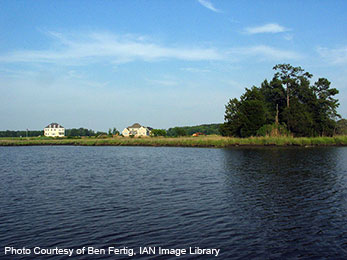The Susquehanna River, much like the Mississippi, drains a large land mass in the eastern United States, and delivers the nutrients from all the farms, cities, and roads of this land mass to the Chesapeake Bay. The Chesapeake dead zone has increased since 1950, much like the dead zones in the Baltic Sea, Black, Sea, northern Gulf of Mexico, and several other systems around the world. Intensive efforts to decrease nutrient loads to the Chesapeake Bay have not yet been successful in minimizing the size of the dead zone, in part because yearly changes in rainfall, wind, and temperature can also contribute to dead zones and mask the effects of reduced nutrient loads.



